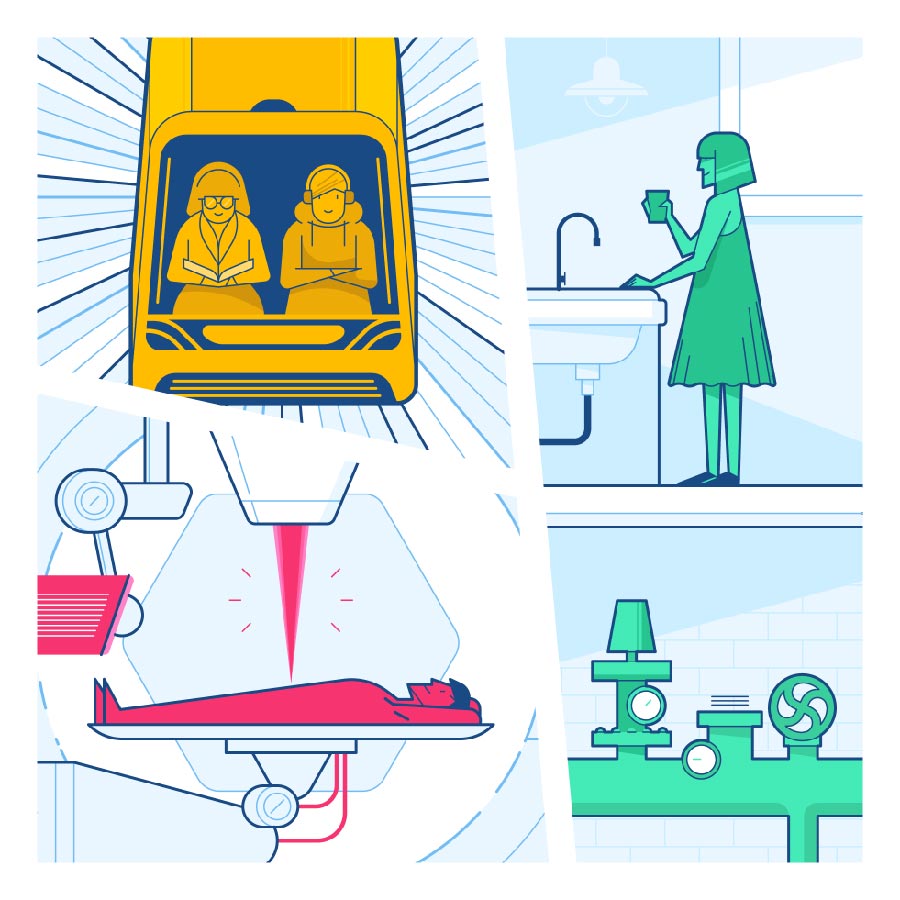When people are the first priority in technological advances, the results can be transformative

As cities grow, everyday services like transport, healthcare, water and energy are where technology can really show its transformative potential. While dazzling design and pioneering performance are exciting to see, the real beauty of tech is when it makes life better for people, with innovations that connect and take the opportunity to be purposeful.
Human-centric ways to solve real-world problems affecting people on a daily basis is at the heart of a collaborative research project between Hitachi and The European House – Ambrosetti. The Connected Cities Initiative looks at exactly how a digital transformation of public utilities could make services smarter and more integrated.
The initiative aims to develop new solutions for cities, working together with councils, businesses (both public and private sector), and most importantly, the people who need and use the services they provide. In all fields, our experience has been that co-operating on the challenges facing the infrastructure we all rely on every day means technology can be developed and used in a way that’s meaningful, efficient and, while not necessarily glamorous, better for everyone.
Collaborating for pain-free cancer treatment
Particle Beam therapy is one of the most advanced forms of cancer treatment, bringing together tumour-tracking technology with spot-scanning radiotherapy. Less invasive than surgery, it’s a form of radiotherapy that is highly targeted, which reduces side effects and makes it better for the patient.
The innovation allows a concentrated beam of radiation to be focused on the treatment site, even if it moves because of breathing, your heartbeat, or tension and anxiety. It reduces stress to the body, and can be done as an outpatient treatment, so people can carry on with their ordinary life.
Heavy ion therapy is a particularly cutting-edge form of particle therapy, said to be more than 2 to 3 times more effective in killing cancer cells than conventional radiotherapy. One such facility that offers this treatment can be found in Osaka, Japan, where Hitachi designed and built the heavy iron therapy system using its cutting-edge particle therapy technology.
Connecting Copenhagen to bring more life to a city
In Copenhagen, the challenge was set to create a seamless metro system which fitted into the city’s existing infrastructure. Hitachi Rail collaborated with Metroselskabet to design, manufacture and build it – not just the trains, but an elaborate power supply system, and a communication system which would allow a control centre to communicate with trains that run at 90km per hour, every 90 seconds at peak time, 24 hours a day.
It launched in 2002 with a pioneering driverless system which was a leading initiative in transport, integrating with the existing local train and bus networks. In September of this year, the next phase of the project, the Cityringen, opened - a wholly underground circle line, enlarging the network with 16km of double track and 17 additional stations.
“The whole Metro was designed to fit hand-in-glove to existing infrastructure,” says Christopher Cox, Metroselskabet’s Project Director. “A driverless metro gives us flexibility to respond to unexpected events in a very short time, and it’s extended the time the city is used. Now the Metro is as much a part of Copenhagen as the London Underground is. It has a cultural place in the city.”
Co-operating with the council to secure water sustainably
The Sardinian village of Oliena takes its water from a natural spring in Su Gologone, one of the most important natural sites on the island. But the ageing water network was struggling with high levels of leakage and the village of 7,000 people was at risk of intermittent water supply.
Abbanoa, the water company for the whole island, needed to find a sustainable solution to improve the village’s supply. Hitachi worked with the company and the local council to find a solution that would save water and energy. After taking an audit of the existing network and analysing the data, it was possible, thanks to technical enhancements such as air and water pressure management and a leak detection system, to improve the situation and prevent new issues.
The result was reduced water loss by over half, and energy was also saved by improving the main pumping station. The ‘Oliena model’ is now considered best practice, with over a hundred other Sardinian municipalities applying the learning to their own water supplies.